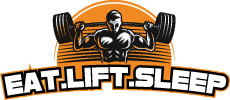Resistance bands are an excellent way to tone and build muscle while protecting your joints. They are lightweight and portable, making them an excellent workout tool. If you are looking to learn about resistance band training, you’re in the right place.
Resistance band features progressive overload, constant tension, and linear variable resistance to help you build muscle. Exercises with resistance bands such as band resisted-squat, banded press-up can build muscles in 8 weeks for a beginner.
However, this is insufficient information about resistance band training. Don’t worry, I’ll go over everything in detail. If you have any doubts about whether or not can resistance bands build muscle, they will be dispelled by the end of this article.
How Resistance Bands Help You Build Muscle?
Resistance bands can be used to cause microscopic damage to your muscle. Following that, your body will repair the torn muscle fibers forming scar tissue and you will gain muscle.
Repairing damaged muscle fibers builds muscles because it fixes the muscle fibers while also creating protein strands, which allows muscle growth.
Features of Resistance Band that Helps You Build Muscle
Resistance bands are an excellent tool for muscle development because of the features they offer.
Resistance bands provide constant tension, progressive overload, and linear variable resistance, all of which are necessary for muscle building.
In this section, I’ll go over each of these features in detail.
Tension
Muscle growth necessitates resistance by tension. To achieve the desired tension, resistance bands can be used.
This tension is created by the elastic tension of the resistance band. Even better, resistance bands provide constant tension. That is, you will experience tension throughout your entire range of motion.
Progressive Overload
You must also progressively overload your muscles. Because if you do not increase the tension your body will not develop muscle further. Luckily for you, resistance bands can be used for progressive overload.
You have the option to choose from all sorts of resistance bands that range from extra-heavy to extra-small for overloading the muscle progressively.
There are other methods to achieve progressive overload with resistance bands which I will discuss in the next section of the article.
Linear Variable Resistance
The tension in resistance bands increases as you stretch them. Its resistance pattern corresponds to the muscles’ natural strength curve.
Resistance bands, in this way, allow you to feel stress when you want it and when it is beneficial to muscle development.
Methods of Progressive Overload with Resistance Bands
You already know that progressive overload is essential for muscle building from the previous section. Resistance bands can be used in a variety of ways to achieve progressive overload. Here are a few methods:
Increasing Time under Tension
Simply put, this implies for your sets to last longer. You may do this by increasing the number of reps or adjusting the tempo.
The best tempo for resistance bands is 2:1:4:1. That is, 2s concentric, 1s hold at the top, 4s eccentric contraction, 1s hold, and repeat. When using bands to develop muscle and strength, remember that eccentric contraction is important.
Increasing Resistance
Use resistance bands with a higher resistance level as your muscles grow. Your bands should be colored differently to indicate various levels of resistance.
If your previous band had 5 pounds of resistance at 100% elongation, replace it with a band that has 7 pounds of resistance at 100% elongation.
Increasing Volume of Workouts and Decreasing Rest Time
You can accomplish this by increasing the number of sets in your workout. As a result, your muscles would be under more strain than they were before. You should also reduce your rest time to put more strain being put on the muscles which causes further muscle growth.
Increasing Frequency of Workouts
You should increase the frequency of your workouts with resistance bands. If you are working out twice a week, increase it to 3. At a certain point, you will even need to do 2 workouts in a day. This will increase stress on the muscles.
Resistance Band Workouts to Build Muscle
To gain muscle with a resistance band, you must choose the right workouts. Otherwise, you will not get the best results. Here are my top resistance band workouts:
Band Resisted Squat
Place a resistance band under your heels keeping your feet shoulder-width wide apart and draw the belt over your head to make it rest on the back of the shoulders and upper back. Stretch the band upwards a few inches keeping each of your hands at shoulder level.
Then perform a squat by pushing your hips back and bending your knees so your thighs are parallel with the floor. Push yourself back up to where you started by pressing your feet into the ground. That counts as one rep.
Banded Press-Up
Loop a resistance belt behind your back by hooking your thumbs into it. Assume a plank stance with your hands somewhat broader than your shoulders on the board.
When you lower your weight, squeeze your glutes and brace your abs until your chest almost hits the concrete. Drive yourself back to the starting point after pausing at the bottom.
Banded Bicep Curls
With your legs parallel and hip-distance apart, stand in the middle of the resistance band. Then you must double up the other ends of the band across the wrists; holding your arms close to the body, slowly raise and lower the band up and down. Squeeze the biceps as you curl your arms up.
How Long Does It Take to Bulk Up with Resistance Bands?
As with every form of exercise routine and equipment, results can differ based on a variety of factors.
The frequency at which you exercise, the strength of your exercises, how well you use progressive overload strategies, your diet, rest, biology, and starting fitness level all play a part in how long it will take to achieve your desired results.
Beginners and those who have been out of shape for a while should expect to see significant muscle growth within eight weeks of beginning a resistance band training regimen.
If you are starting at a higher level than a novice, you should see some positive results after around 12 weeks.
Can You Replace Weights with Resistance Bands?
You can replace weights with a resistance band depending on your needs and your level.
For beginners, you can certainly replace resistance bands for weights. The bands offer lower risk and a higher reward, as opposed to weights, which pose high risk of injury to newcomers.
Resistance bands are superior to weights for achieving a toned and lean physique. So, if you want to build this type of muscle, resistance bands can definitely replace weights.
But if you want to bulk up considerably then you can’t replace weights with resistance bands. A big band’s resistance is much more difficult to use than a free weight of the same resistance. Again, progressive overload is easiest with free weights.
So, do resistance bands work as well as weights? Yes, to a certain extent and for specific purposes. However, in other situations, they will do the job but not as well as weights. You should use both at the same time for optimal results.
Conclusion
You should now have an understanding of whether or not can resistance bands build muscle. You’ve learned everything there is to know about resistance band training for muscle building as well. Using my instructions of resistance band training for gains will definitely help you bulk up.
Best wishes, and thank you for taking the time to read this article.
Tired of No Gym Equipment? Get started with Rogue Fitness Today!
My wife and I found Rogue Fitness for home workout setups and have been amazed at the quality and overall craftsmanship. With the current stay-at-home issues over the virus having a personal gym has become much more of my focus.
Purchasing the Rogue Fitness gear has allowed me and my wife to work out on a timetable that fits us. Also, this allows me to skip the gym as I always feel like people are staring and I am self-conscious of how I look still.
I can’t recommend them highly enough, they aren’t the most inexpensive but compared to a monthly charge for a gym membership you do start to become profitable over time by saving the monthly expense.

Join Us On Facebook
Explode Your Limits
If you are looking for people to talk to about your journey join us all today!





